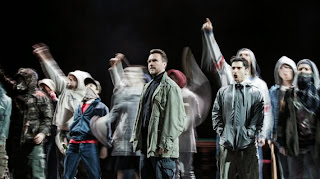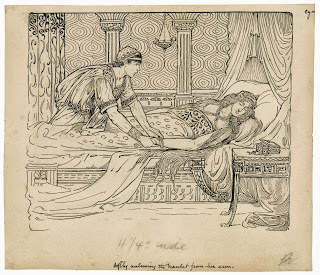Protestantism entails uncertainty with regard
to one’s fate in the afterlife; for example, even though John Calvin’s brand of
religion centered around the understanding that one was already either
condemned to hell or slotted for heaven, there was no way for Calvinists to
know which fate awaited them. This
uncertainty of religion, Appadurai argued, can often translate to uncertainty
in other areas of society, including the economy. Consequentially, western societies feature unstable economies that require risk
and uncertainty (the two terms most frequently referred to during this portion
of the talk) to function properly.
This risk translates in many ways, making the economy of the
United States one that is infused with uncertainty. The stock market, for example, is considered
a game of chance played with one’s finances.
The debts acquired through these and other forms of “gambling” are used
to make profits both for businesses and private individuals. As Appadurai stressed, we are creating these
assets and profits from debt, which is an unstable system on which to build.
While I was listening to this talk, I also thought of Timon.
He is a clear example of the risk game, and played with disastrous results.
In borrowing money, he perhaps hoped to make enough profit on these loans to pay his debts
back, but instead gave all of the money away to his friends, later finding
there was no hope of those gifts being repaid. These defaults on debts reflects failures of the
capitalist system, both in the past decade and in such events as the Great
Depression. Furthermore, the idea of
risk and uncertainty, if Appadurai’s theory is to be applied, would imply
Shakespeare is writing both from his own context and from Timon’s—both Athenians
and Shakespeare’s contemporary Christians had a great amount of uncertainty in
their religion, which was seen in their societies in the beliefs that amassing
interest and great amounts of wealth were unnatural. Furthermore, the Senators are believed to
have used usury as a way of becoming so wealthy, which was a sin in the eyes of Christians at the time. That their insistence on being repaid is
immediately followed by Timon’s fleeing and death, and the defeat of Athens by
Alcibaldes, is indicative of Shakespeare’s opinion on a society built on these
principles, and also hints at Appadurai’s theories of why capitalism is
unreliable.

























